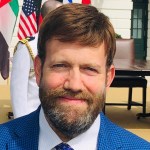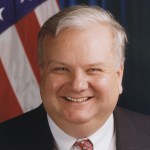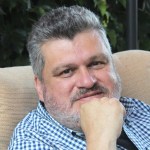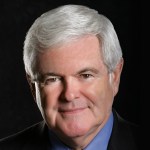Everybody, Peter Zion coming to you from the peak of Mount Evans behind me is mountain bear start and square top and behind that Geneva and silver indicator, and treasure and all the others. Today we’re gonna talk about something a lot of you have written in about, and that is the LK 99 superconductor information that has recently been leaked on to Twitter and Reddit. The idea of a superconductor is it doesn’t lose any of its throughput, regardless of distance. And if you can do that, over long distances, you can transfer power from anywhere to anywhere relatively easily and cheaply. That’s the idea anyway, the short version for lk 99 is that it’s probably nothing. The reports in question date back over 15 years, and the only thing that’s new is that they were leaked, and they were put online and a number of institutions within Korea, that’s where the first tests were done. I’ve already come out and saying that at best, they’re flawed. But none of them have ever been replicated, including by the team that did the original report. So there’s probably nothing here, it’s just that it’s getting a little bit of fresh air all of a sudden. Now,
if you want to bet on semiconductors, I welcome you to to it, it’s one of the materials sciences breakthroughs that we really need. If we’re going to make the green transition stick, one of the problems we have with the green transition is that you can generate a lot of solar in the southwest a lot of wind power in the Great Plains. But that’s not where most of the American population lives. And even in the United States, where people will only only live a couple 1000 miles away from those zones. That’s much better than you’ve gotten, say Europe, where you’d have to basically go to the great Eurasian steppe for wind and into the Sahara for solar. So if you can solve the semiconductor in the transmission power problem, great.
There’s also another issue in the United States, because it’s hard to transmit power. And you know, very, very, very, very loose rule of thumb. If you transport power, about 500 miles, it costs almost as much to do that transmission because of the loss as it does to generate the power in the first place. So you’re generally not going to send electricity very far. What that means is in the United States, most electrical concerns, all the utilities are local. So each town or each county has their own. There are very few large utilities in the United States. And if you want to make solar and wind work at scale, you either need larger and larger and larger entities or you need the ability to transfer power across jurisdictional lines, especially state and grid boundaries. superconductors would in theory, allow us to do that technically, but we still need the legal structure to do it. Now you can do high voltage lines, which will double, triple, maybe even quadruple the distance, you can send power in an economically viable manner. But until you can cross those boundaries, it doesn’t really matter. So what we need now, even before we get superconductors is multiple acts of Congress to break down the legal jurisdictions to allow power to be sent large distances. And as soon as Congress does that, a number of states will sue because right now, this has been a local mistake, legal prerogative. So we need a significant legal overhaul before we can really do the green transition, even if we did have superconductors. So I’d say start now and get the laws changed. And then hopefully we can have that physical science breakthrough that is necessary to do this at scale and over distance. Okay, that’s it. Take care
















Peter Zeihan
Geopolitical Strategist
Commentary
Our commentary partners will help you reach your own conclusions on complex topics.
Is the US looking for a war?
8 hrs ago
Peter Zeihan
How future generations could shift US support for Israel
Yesterday
Peter Zeihan
Why election of European Commission president is so important
Wednesday
Peter Zeihan
‘Both completely corrupt’: What Americans think of Biden, Trump
Tuesday
Dr. Frank Luntz
Does the new LK-99 superconductor deserve all the hype?
Peter Zeihan
Geopolitical Strategist
By Straight Arrow News
Social media has been buzzing about the discovery of LK-99, purportedly a room-temperature superconductor that could conduct electricity with no resistance, meaning it wouldn’t require massive cooling. If true, it’d be a huge breakthrough in the fields of quantum computing and nuclear fusion, to name a few.
Straight Arrow News contributor Peter Zeihan explains why he thinks all the hype is premature because LK-99 is just too good to be true.
Excerpted from Peter’s August 10 “Zeihan on Geopolitics” newsletter:
Today’s video comes to you from the peak of Mount Evans.
Is the superconductor of every Green’s dreams finally here? I hate to burst your bubble, but the LK-99 is just too good to be true.
Despite their claims, these ‘new’ studies on LK-99 have largely been dismissed by the scientific community due to inconsistencies in the methodologies used. In reality, we haven’t gotten any closer to the superconductors we’ll need for the green transition to stick.
One of the big problems with green energy comes down to transmission. Once your solar panels or wind turbines generate all this power, you still need to get it to the people who will use it. If you can’t do that, then what’s the point?
While this might not be the answer to our superconductor needs, at least this topic will get some new eyes on it and much-needed attention. And who knows, maybe it will even kickstart policy reform…
Everybody, Peter Zion coming to you from the peak of Mount Evans behind me is mountain bear start and square top and behind that Geneva and silver indicator, and treasure and all the others. Today we’re gonna talk about something a lot of you have written in about, and that is the LK 99 superconductor information that has recently been leaked on to Twitter and Reddit. The idea of a superconductor is it doesn’t lose any of its throughput, regardless of distance. And if you can do that, over long distances, you can transfer power from anywhere to anywhere relatively easily and cheaply. That’s the idea anyway, the short version for lk 99 is that it’s probably nothing. The reports in question date back over 15 years, and the only thing that’s new is that they were leaked, and they were put online and a number of institutions within Korea, that’s where the first tests were done. I’ve already come out and saying that at best, they’re flawed. But none of them have ever been replicated, including by the team that did the original report. So there’s probably nothing here, it’s just that it’s getting a little bit of fresh air all of a sudden. Now,
if you want to bet on semiconductors, I welcome you to to it, it’s one of the materials sciences breakthroughs that we really need. If we’re going to make the green transition stick, one of the problems we have with the green transition is that you can generate a lot of solar in the southwest a lot of wind power in the Great Plains. But that’s not where most of the American population lives. And even in the United States, where people will only only live a couple 1000 miles away from those zones. That’s much better than you’ve gotten, say Europe, where you’d have to basically go to the great Eurasian steppe for wind and into the Sahara for solar. So if you can solve the semiconductor in the transmission power problem, great.
There’s also another issue in the United States, because it’s hard to transmit power. And you know, very, very, very, very loose rule of thumb. If you transport power, about 500 miles, it costs almost as much to do that transmission because of the loss as it does to generate the power in the first place. So you’re generally not going to send electricity very far. What that means is in the United States, most electrical concerns, all the utilities are local. So each town or each county has their own. There are very few large utilities in the United States. And if you want to make solar and wind work at scale, you either need larger and larger and larger entities or you need the ability to transfer power across jurisdictional lines, especially state and grid boundaries. superconductors would in theory, allow us to do that technically, but we still need the legal structure to do it. Now you can do high voltage lines, which will double, triple, maybe even quadruple the distance, you can send power in an economically viable manner. But until you can cross those boundaries, it doesn’t really matter. So what we need now, even before we get superconductors is multiple acts of Congress to break down the legal jurisdictions to allow power to be sent large distances. And as soon as Congress does that, a number of states will sue because right now, this has been a local mistake, legal prerogative. So we need a significant legal overhaul before we can really do the green transition, even if we did have superconductors. So I’d say start now and get the laws changed. And then hopefully we can have that physical science breakthrough that is necessary to do this at scale and over distance. Okay, that’s it. Take care
Is the US looking for a war?
With conflicts, skirmishes and tensions simmering around the globe, and with the United States playing supporting roles in several of them, the question of whether the country getting involved directly is legitimate. The war in Ukraine, for example, has forced several European countries to reintroduce mandatory military service to confront the growing threat from Moscow.…
8 hrs ago
How future generations could shift US support for Israel
Israeli Prime Minister Benjamin Netanyahu addressed a joint meeting of Congress on July 24, calling for increased bipartisan support for Israel amid its 10-month war with Hamas. He praised President Biden’s “half century of friendship to Israel” and referred to Hamas as “sheer evil.” In the video above, Straight Arrow News contributor Peter Zeihan analyzes…
Yesterday
Why election of European Commission president is so important
Ursula von der Leyen has been reelected to another five-year term as president of the European Commission after a vote by EU lawmakers. Von der Leyen will now preside over a coalition that shifted to the right after recent European elections, where ultra-conservative parties won a record number of seats. In July, von der Leyen…
Wednesday
Protests in Bangladesh signal more trouble ahead
Public protests in Bangladesh against government hiring practices — and against the government’s military response to those protests — have left at least 174 dead and 2,500 jailed. Bangladesh’s people face an acute jobs and unemployment crisis, so public disagreements over hiring practices carry significant weight. The regime recently enforced a nationwide internet blackout as…
Tuesday
In US election, early polling doesn’t tell us anything yet
From President Joe Biden’s declining health to the attempted assassination of Donald Trump, there’s been a series of major political developments in the United States that might impact the results of the November election. These developments have led to renewed confusion, concern and debate regarding which candidate might win, and in the Democrats’ case, which…
Jul 19
Underreported stories from each side
Group accuses Pa. teachers union of illegally using money to back Shapiro’s 2022 campaign
8 sources | 0% from the left
Getty Images
Some House Republicans slam Vance as Trump’s VP pick: ‘The worst choice’
8 sources | 0% from the right
Reuters
Latest Stories
Congress still trying to figure out how to reduce wasteful military spending
Watch 2:29
3 hrs ago
US Navy, Air Force making waves with new weapons at RIMPAC
Watch 6:03
3 hrs ago
Israeli PM Netanyahu meets with Trump at Mar-a-Lago
Watch 2:54
3 hrs ago
Growing US nuclear power resurgence reaches the nation’s heartland
Watch 1:19
3 hrs ago
Beer from the sun, other solar thermal projects get government funding
Watch 2:04
3 hrs ago
Popular Opinions
In addition to the facts, we believe it’s vital to hear perspectives from all sides of the political spectrum.
Trump has an excellent opportunity with Black voters
9 hrs ago
Star Parker
Don’t fall for GOP’s cheap racist attacks on Kamala Harris
10 hrs ago
Dr. Rashad Richey
Americans must reject Trump to defend our democracy
Yesterday
Jordan Reid
Why all the changes in European parliamentary governments?
Wednesday
Newt Gingrich